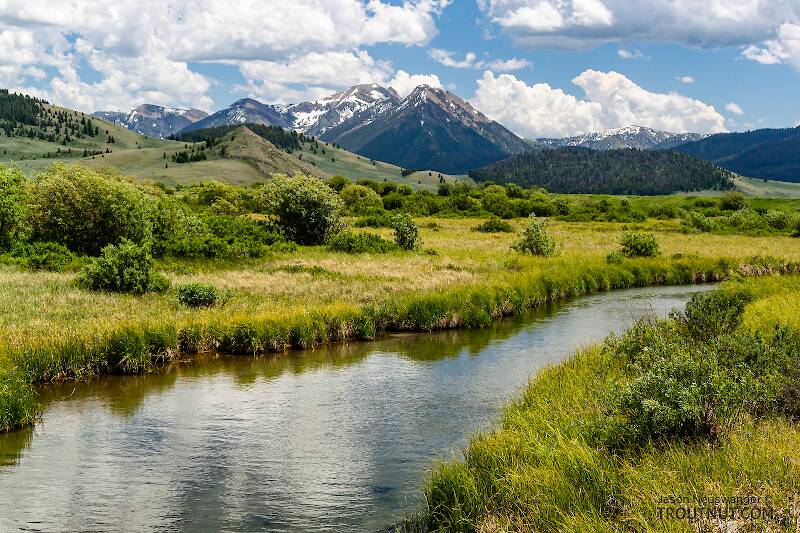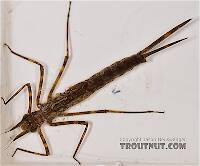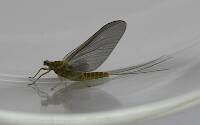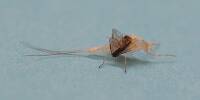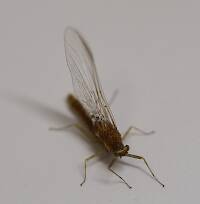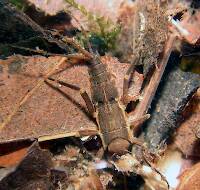
Hex Mayflies
Hexagenia limbata
The famous nocturnal Hex hatch of the Midwest (and a few other lucky locations) stirs to the surface mythically large brown trout that only touch streamers for the rest of the year.
Featured on the forum

With a bit of help from the microscope, this specimen keys clearly and unsurprisingly to Hydropsyche.

Troutnut is a project started in 2003 by salmonid ecologist Jason "Troutnut" Neuswanger to help anglers and
fly tyers unabashedly embrace the entomological side of the sport. Learn more about Troutnut or
support the project for an enhanced experience here.
Grannom on May 6, 2007May 6th, 2007, 9:31 am EDT
I understand that what I am about to say if rather ignorant, but I would like some help as to if this is a possibility or something I am capable of.
What is involved in making an insect aquarium in order to learn more about specific insects, for identification and tying purposes. Im sure there is alot of informationm to give but some basics would be nice.
Mike
What is involved in making an insect aquarium in order to learn more about specific insects, for identification and tying purposes. Im sure there is alot of informationm to give but some basics would be nice.
Mike
"Be calm - you're there..." "...Tell yourself there's no rush, even if there is."
-John Gierach
-John Gierach
Konchu on May 7, 2007May 7th, 2007, 1:48 am EDT
Different insects have different needs. Which creatures did you have in mind? From which habitats?
Grannom on May 7, 2007May 7th, 2007, 4:20 am EDT
Great Lakes/NW Pa region. I would like to raise caddisflies or mayflies, but anything would be ok if they are too difficult.
"Be calm - you're there..." "...Tell yourself there's no rush, even if there is."
-John Gierach
-John Gierach
Konchu on May 7, 2007May 7th, 2007, 3:08 pm EDT
So you are wanting to raise stream caddis- and mayflies.
Do you have some sort of bubbler to keep the water aerated? This is important, especially for the mayflies.
See this older thread for more info...then we can go from there.
http://www.troutnut.com/topic/625#2862
Do you have some sort of bubbler to keep the water aerated? This is important, especially for the mayflies.
See this older thread for more info...then we can go from there.
http://www.troutnut.com/topic/625#2862
Quick Reply
Related Discussions
Topic
Replies
Last Reply
4
Apr 12, 2014
by Brookyman
by Brookyman
5
Jun 14, 2008
by Wiflyfisher
by Wiflyfisher
11
Feb 26, 2008
by Taxon
by Taxon
5
Aug 25, 2009
by DayTripper
by DayTripper

